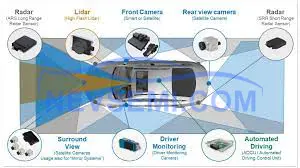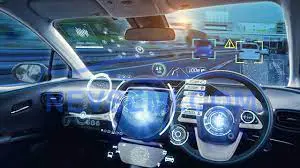-
ADAS and Highly Automated Driving
-
Body and Comfort
-
Connectivity
-
Functional Safety and Automotive Security
-
Infotainment and IVE
-
Powertrain & Vehicle Dynamics
- Active Suspension
- Braking and Stability Control
- Electrification
- Electric Power Steering (EPS)
- Transmission and Gearbox
- HV-LV DC-DC Converter
- EV Auxiliary Systems
- 48-Volt-LV DC-DC Converter
- 48-Volt Starter Generator
- Traction Inverter
- On-Board Charger (OBC)
- DC Fast EV Charging
- Powertrain Control Module (PCM)
- Gate Driver Solutions
- Battery Management Systems (BMS)
-
Vehicle Networking
ADAS and Highly Automated Driving
Advanced Driver Assistance Systems (ADAS) encompass a range of technologies and features designed to assist drivers in the driving process and improve overall safety. These systems utilize various sensors, cameras, radars, and actuators to monitor the vehicle's surroundings, detect potential hazards, and provide warnings or automated interventions when necessary.
ADAS technologies serve as building blocks and precursors to achieving Highly Automated Driving. Many of the sensor technologies, algorithms, and control systems used in ADAS are also essential components of Highly Automated Driving systems. ADAS systems provide the foundation for understanding the vehicle's surroundings, detecting objects, and making decisions to enhance safety and driving comfort.

While ADAS features offer assistance and support to the driver, Highly Automated Driving takes it a step further by assuming most driving tasks and allowing occupants to engage in non-driving activities. The progression from ADAS to Highly Automated Driving involves advancements in sensor technology, data processing capabilities, and algorithm refinement.
It's worth noting that achieving Highly Automated Driving involves additional challenges, such as ensuring robustness and safety in complex traffic scenarios, regulatory considerations, and liability issues. Nonetheless, ADAS technologies and their continued development play a crucial role in paving the way for Highly Automated Driving and realizing the vision of fully autonomous vehicles.

Reference Design
Technical Documentation
- Product Scout Automotive
- Automotive Image Brochure
- ADAS Safety Focus: Around View Systems
- Automotive Imaging Power Architecture and Design
- Evaluating Functional Safety in Automotive Image Sensors
- SiPMs in Direct ToF Ranging Applications
